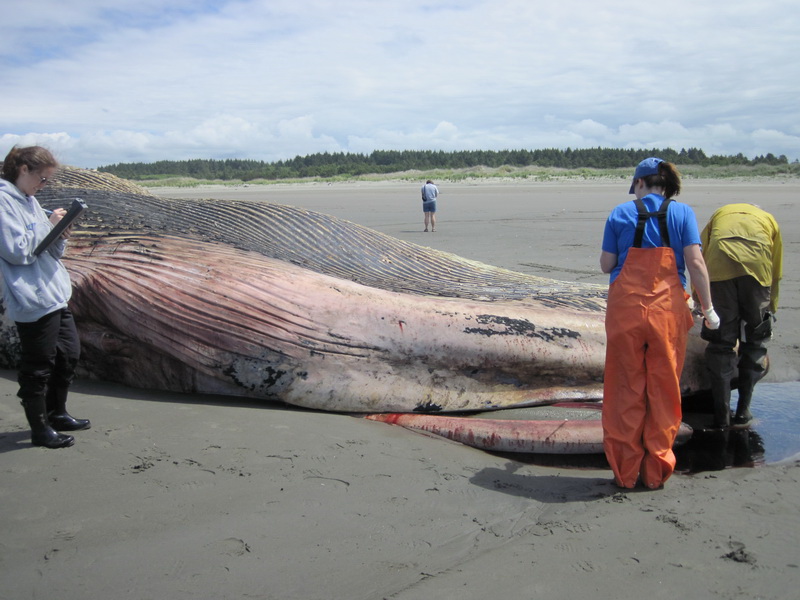Biologists from Cascadia Research and the Washington Department of Fish and Wildlife conducted an examination of a dead fin whale at Ocean City, WA on 13 June 2013. The whale had washed up the previous evening but the species was not determined until the detailed external and internal examination. The animal was moderately decomposed with most of its skin missing suggesting it had been dead a week or more but was positively determined to be a fin whale based on the baleen color. The 68-foot adult male had been in fairly good health prior to death with a healthy oily blubber layer and evidence of having fed recently based on stomach contents. There was substantial bruising in the blubber and underlying tissues on the left side of the head and the upper and lower left jaw indicating severe blunt force trauma consistent with having been killed by collision with a ship.
This is the 11th fin whale to have stranded in Washington State since 2002, and the 2nd fin whale to strand this year (after an earlier death documented in April 2013). Ship strike has been indicated in 9 of these cases. Ship strikes are a growing concern with several west coast species of whales particularly blue and fin whales (see our other research on ship strikes as well as past publications on previous fin whale ship strikes). In addition to these documented cases, scientists suspect that these may only represent a tenth or less of the true number occurring since most whales that die never wash ashore and either sink or drift offshore.
Fin whales are the 2nd largest animal that has ever lived, only surpassed by the slightly larger blue whale. several thousand fin whales feed off the US West Coast generally in deeper waters 30 or more miles from offshore feeding on small fish and krill. Their populations have been generally increasing as they recover from commercial whaling.
Special thanks to Ocean City State Park which will be coordinating removal and disposal of the whale.
Photographs below show Cascadia and WDFW researchers engaged in measuring and examining in whale. These may be used but top two should be credited as courtesy of Cascadia Research and bottom photograph credited to Robin Linsdey.


